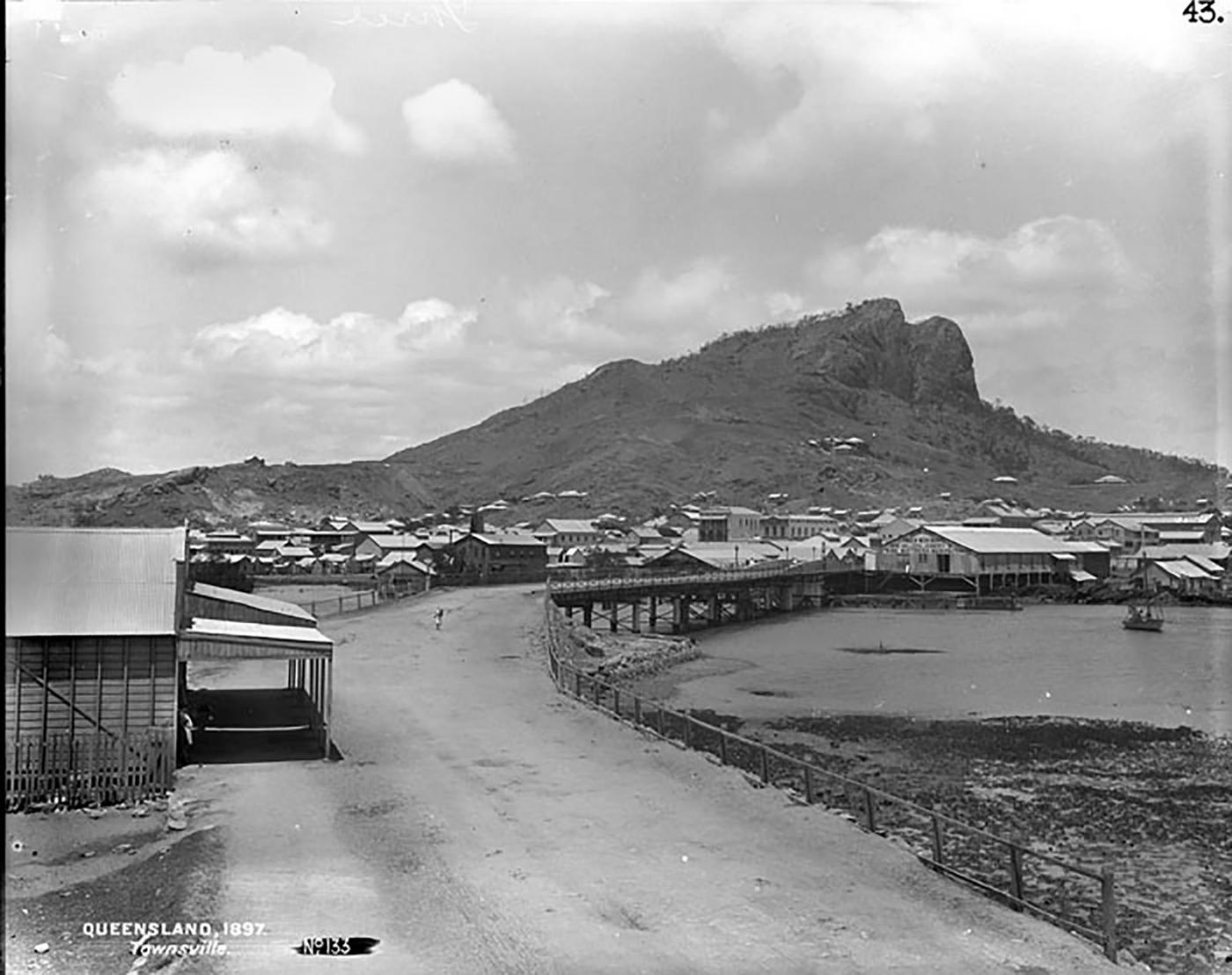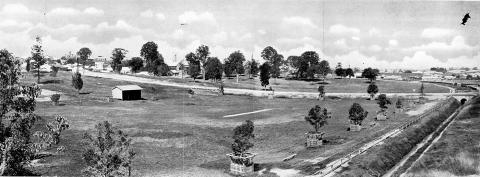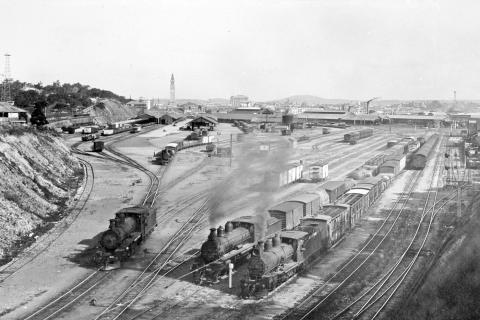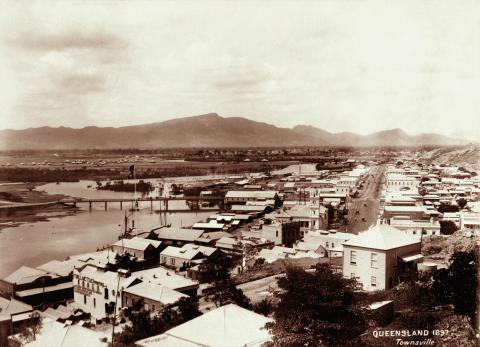
- News of the day
-
Traralgon Record, Friday 7 July 1899
Touring Queensland
- About Townsville -
Townsville is the centre of commerce for Northern Queensland. The climate, as in most of the Queensland towns, is very pleasant during the winter months, and very hot but not unhealthy during the summer. Our first introduction to Townsville is a typical experience of the tropical country we are travelling through.
After installing ourselves and our luggage at a comfortable hotel, we go for a walk along the main street as a preliminary to further explorations. The afternoon is sultry, and we find the shade of the shop verandahs agreeable. Crossing the road to the Post Office for our Southern letters, we notice a heavy black cloud overhead, and we decide upon returning at once to the hotel. Too late, alas! For with scarely any warning the rain begins to pour with great drops that splash and roll like hailstones, and in less time that it takes to write are drenched and the street converted into a small river.
[...] find ourselves immediately at the foot of Castle Hill which rises abruptly 1,000 ft, and takes us a good hour to climb. Arrived at the summit we find that it is divided into three heads, known as the Two Sisters and Western Point. The extensive view we command quite repays us for the toil of the ascent. Looking down from the Two Sisters we see the Grammar School and Park nestling at their base, the town following the bend of the shore, and beyond, the blue waters of Cleveland Bay, glistening in the sunlight; Magnetic Island in close proximity, and the white line of the Sandy beach, broken at Kissing Point by its well-equipped fortifications then stretching away to Palm Islands, 40 miles distant.
From Western Point, the third head of the summit, we gain a view of the country with the Sea View Range in the background with Mt. Elliot and Mt. Stewart standing out prominently against the horizon.
Upon our return to the hotel we do ample justice to the late but excellent breakfast provided for us.
- Background
-
Castle Hill has formerly also been known locally as Cutheringa, Cudtheringa, Cootharinga, and Mt Cutheringa. The Aboriginal history associated with Cutheringa has not been recorded, but its name survives as one of only two known Australian Indigenous place names in the Townsville region, the other being Pallarenda.
Castle Hill was one of the earliest sites named by Andrew Ball who, together with MW Reid, were the first Europeans to explore the Ross River area in April 1864.[6] The settlement established here was known initially as Castletown, until the name was replaced by Townsville in 1865. The hill became a much admired local landmark, evoking aesthetic delight and a unique sense of identity. This prominent link between urban life and nature largely determined the disordered layout of Townsville's streets and in the late 19th century was frequented for recreational pursuits such as botanising and nature study. Townsville residents also illegally plundered timber and firewood from Castle Hill. Wild goats further ravaged the native vegetation. By the late 1880s the Townsville Herald (1822–97) voiced considerable public outrage at the continued denudation of Castle Hill. These concerns were part of Queensland-wide debates on forest resource use and conservation. In an innovative approach to conservation, the Townsville Municipal Council applied to the Crown to establish the Hill as a reserve under their protective trusteeship, and on 30 June, Castle Hill was gazetted a Recreation Reserve of 228ha.
/146.8179605,-19.2641377,7/450x450@2x.png?access_token=pk.eyJ1IjoicXNhLWRpc2NvLXFsZCIsImEiOiJjamJmdTgyZXEyeWNjMnlxZm8xcmtieHgxIn0.lmT9J5tTPKGuuccQgCVSAg)



